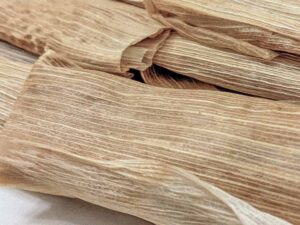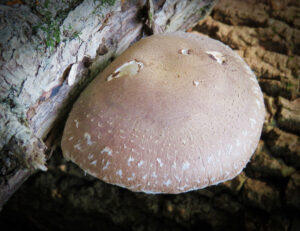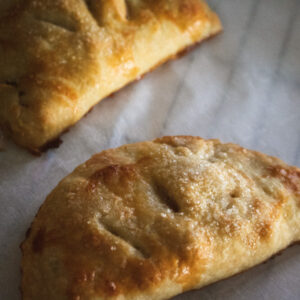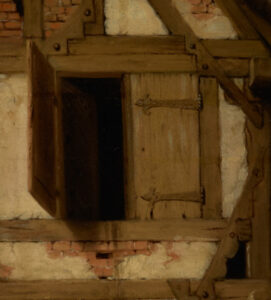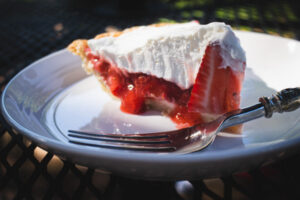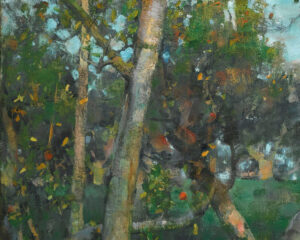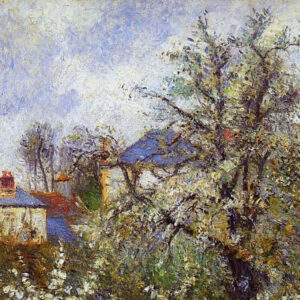Strawberry Rhubarb Jam Worth Waiting For

In the course of refining this recipe, we lost quite a few strawberries. The Hearth & Field test kitchens are prone to be frequented by visitors of diminutive size, who try to help out by “testing” the product at all stages of development.
Despite the resulting complications when trying to record quantities, we are, on the whole, happy that such persons should be part of the process. If a small child is fortunate enough to have access to a strawberry field in the ripe days when spring turns to summer, she will give little thought to winter. And if she is fortunate enough to have access to a wooden stool and some momentarily unguarded strawberries on top of the counter, she will give little thought to her mother’s upcoming H&F recipe deadline. This is all charming in its way and serves as a reminder to live in the present.
It also leads to some interesting reflections, once the jars are finally sealed:
It is the natural business of children to enjoy the things in front of them; adults should be more like them in this way. But, also, it is the natural business of adults to prepare for the future. Grownups must expand their gaze beyond the current moment — and not just for securing physical sustenance: delayed gratification is good for us at a deeper level.
Yet one wonders if any of us are actually growing up these days. Though we tend to think a great deal about the future, nervous preoccupation is not the same thing as needful preparation. Unlike the birds of the air and the children of the nursery, adults do sometimes need to sow and reap and store up — but all creatures are told not to worry. It seems that instead of relinquishing our anxieties, we choose to numb them with endless instant comforts. If we first-world consumers desire strawberries or strawberry jam or anything else, we can get it day or night, all year long — in-store, curbside, or delivered to our door. Our minds reside in the future, but our bodies do not delay gratification. It seems we have neither become like little children nor put childish things aside: we’ve simply outsourced our adulthood to chainstores.
Alas, sometimes we can only find our way to truth by dancing around it first. We move toward an idea; then we grow up a bit and move toward some apparently opposing idea; then eventually we find a “both-and” balance of the two. Thesis, antithesis, synthesis. Which is why you should consider making strawberry jam.
The process itself commands your attention and positions it squarely in the present moment. You cut and stir and simmer. There is color and scent and sound. You try to be patient with hungry would-be helpers, and probably sneak a few berries yourself, while your kitchen is filled with delightful commotion. But the point of it all is that your pantry be filled with delightful provisions. Which you’ll be glad of and enjoy greatly . . . next winter.
In any case, following some experimentation, and despite the interruptions and philosophical meanderings, we really think we’ve nailed this recipe. The consistency is excellent, and the sweetness and tartness are in perfect balance. (Yes, we did have to try a bunch, pre-winter — professional duties and all — but we hope you’ll agree that it is indeed a strawberry rhubarb jam worth waiting for.)
Strawberry Jam Worth Waiting For

Yield: 5 Jars
Equipment:
5 canning jars (1/2 pint each) with new lids
Saucepan (6 or 8 quart will work best)
Colander or large sieve
Large mixing bowl
If water-bath canning: Large stock pot with canning insert, canning tongs, et cetera
Ingredients:
2 pounds strawberries, hulled and rinsed, diced (about 6 cups)
1 pound rhubarb, trimmed of green or soft areas, diced (about 4 cups)
2 cups sugar
1/4 cup plus 2 tablespoons lemon juice
Zest from 1 lemon (about 1 teaspoon)
You can store for the winter, as we suggest, or just keep them in the refrigerator for a couple of weeks. If storing for the winter, sterilize jars and lids, and prepare for standard water bath canning via the usual method.
Place a small plate in freezer.
Put the strawberries, rhubarb, sugar, 1/4 cup lemon juice, and zest in saucepan. Allow to sit at room temperature for one to two hours to macerate. Fruit can vary so you need to gauge: if there is not a lot of liquid (or if there is but you just prefer your jam on the runny side), add about 1/2 cup water.
Cook over medium-high heat, stirring frequently, for 10 to 15 minutes.
Pour into a colander or sieve over a large bowl, and stir the fruit gently until the juices accumulate at the bottom of the bowl.
Return the juice to the pan. Turn heat to high, and boil — stirring occasionally until reduced to about 1 1/2 cups. This may take anywhere from 10 to 20 minutes.
Add the fruit back into the pan with the reduced juice. Add remaining lemon juice. Bring to a simmer, stirring frequently for approximately 15 minutes. To test consistency, remove the cold plate from freezer and place a small dab of the mixture on it, then briefly return to freezer: if the dab is slightly firm after about 1 minute in the freezer, then you’re good to go; if not, simmer a little longer. If there is foam, skim as much as you can off the top.
Remove pan from heat, and stir gently. Ladle into prepared jars, leaving 1/4 inch of room at the top. Use a damp towel to wipe rims of jars clean. Place flat lids and rings on jars, adjust rings so that they are just finger-tight.
If water-bath canning, consult and follow the standard procedures (the gist: boil for 5 minutes to process, confirm seals after 1 hour, and let rest without touching for 12 hours).
Jars that do not seal or have not been water-bathed canned can be stored in the refrigerator for up to 2 weeks.
Notes:
Delicious on scones, yeasted waffles, toasted sourdough bread — or just partake by the spoonful.






